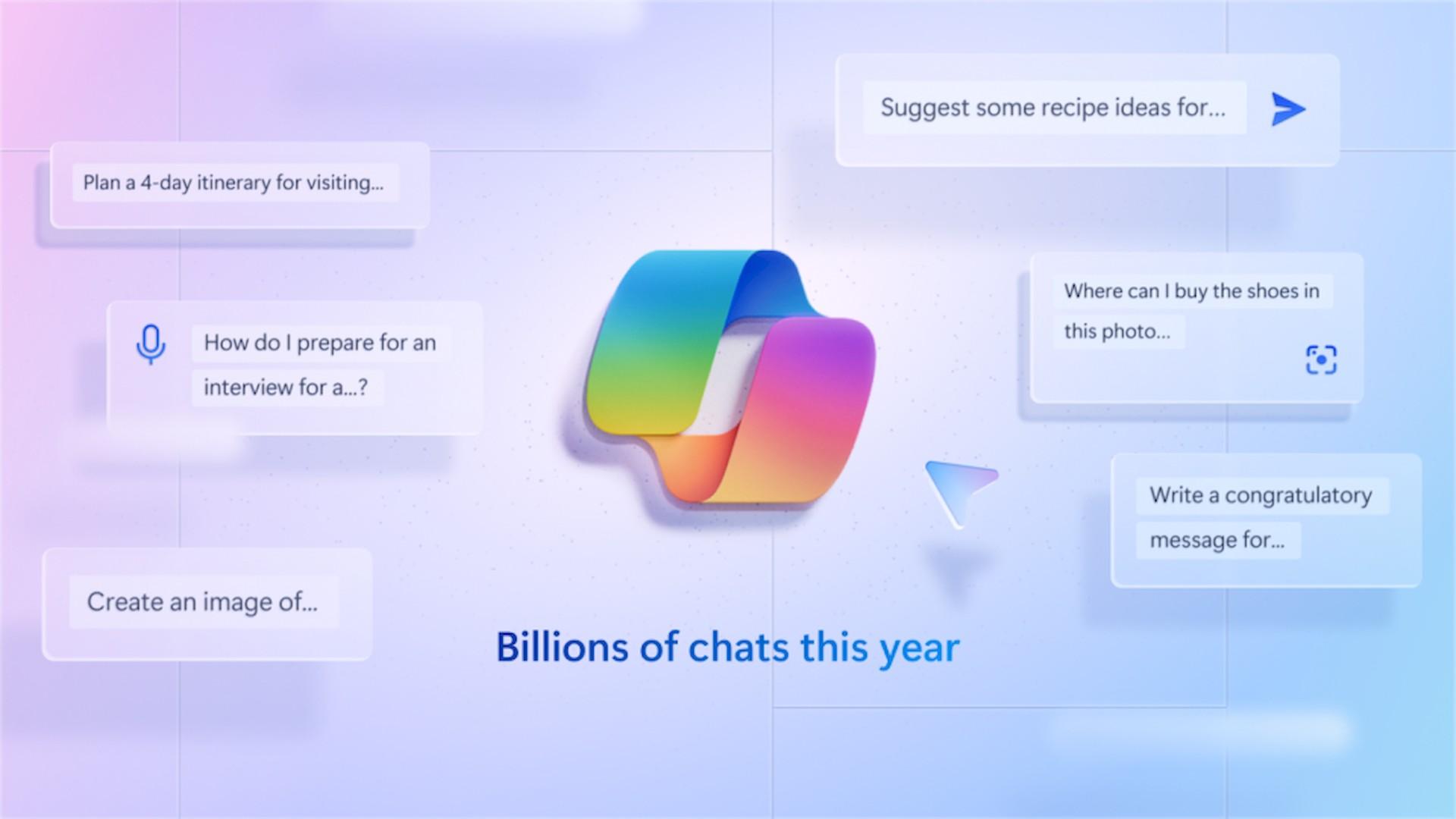Microsoft is celebrating a year of AI advances with a sneak peek at Microsoft Copilot features it’s currently testing for its AI platform. Now available on Windows 10 and Windows 11, Copilot will soon tap into OpenAI’s latest model, GPT-4 Turbo, significantly increasing its capabilities.
GPT-4 Turbo brings the OpenAI model’s knowledge base up to April 2023 and significantly increases how much information it can ingest at one time, enabling users to tackle more complex and longer tasks. Microsoft says this model is currently being tested with select users and will be widely integrated into Copilot in the coming weeks so it will be the engine behind the new Microsoft Copilot features.
So what are the new Microsoft Copilot features and why are we drawing a parallel to OpenAI’s GPT-4 Turbo? Let us explain.

What are the new Microsoft Copilot features?
No one is unaware of the AI craze and the race for tech companies to be the best in the field. Every day, brands and big tech companies are exploring new frontiers in this fascinating technology and offering us, the users, brand-new experiences.
Microsoft and OpenAI seem to be working hand in hand in this regard, as Microsoft Copilot and Microsoft’s other AI development initiatives are aided by the giant artificial intelligence company, perhaps the largest technology company in history. At the beginning of his eventful week with OpenAI, Microsoft even made an offer to OpenAI CEO Sam Altman.
Here is a quick rundown of what’s new on Copilot.
Enhanced DALL-E 3 model
Microsoft Copilot elevates image creation to unprecedented heights with the introduction of the enhanced DALL-E 3 model. This groundbreaking advancement empowers users to generate captivating and visually stunning images with remarkable precision and responsiveness to prompts.
Whether crafting illustrations for design projects, visualizing concepts for presentations, or exploring artistic expressions, the DALL-E 3 model caters to a vast spectrum of creative endeavors.
Rewrite phrases in Edge
Microsoft Edge seamlessly integrates with Microsoft Copilot’s Inline Compose with Rewrite Menu, empowering users to effortlessly refine text directly from websites. Simply highlight the desired text and instruct Copilot to modify it, ensuring effortless content refinement.
This intuitive feature streamlines writing tasks, enabling users to quickly polish their writing without switching between applications or sites.
Multi-Modal with Search Grounding
Next up in the new Microsoft Copilot features is the Multi-Modal with Search Grounding.
Microsoft Copilot’s Multi-Modal with Search Grounding feature revolutionizes image understanding by harnessing the power of GPT-4 with Vision, coupled with Bing image search and web search data. This synergistic combination enables Copilot to extract profound insights from images, providing more precise and informative responses to user queries.
Whether analyzing complex visual data or interpreting intricate artistic expressions, Multi-Modal with Search Grounding empowers Copilot to deliver deeper understanding and enhanced assistance.

Deep Search on Bing
Deep Search, an upcoming feature on Bing, redefines search experiences for complex topics by leveraging the power of GPT-4. This innovative feature meticulously analyzes the nuances of intricate search phrases, enabling it to present users with the most relevant and informative results.
By delving into the depths of complex queries, Deep Search effectively addresses users’ specific needs, ensuring they uncover the information they seek.
Copilot Code Interpreter
Perhaps one of the most exciting one out of the new Microsoft Copilot features is the Code Interpreter, a versatile tool designed to empower users to tackle a wide range of complex tasks. This powerful feature seamlessly handles precise calculations, intricate coding challenges, robust data analysis, and sophisticated visualizations.
Whether navigating mathematical problems or crafting sophisticated algorithms, the Code Interpreter stands as an invaluable asset for users of all skill levels, enabling them to overcome complex challenges with ease.
How does Bing use GPT-4?
Bing Chat, the AI-powered chatbot developed by Microsoft, has taken a revolutionary leap forward by integrating OpenAI’s latest language model, GPT-4. This advanced technology elevates Bing Chat’s capabilities, empowering users to engage in more natural and comprehensive conversations.
Apart from powering the Microsoft Copilot features, GPT-4 also enhances the search experience on the Microsoft Edge browser.
Unlike traditional search engines that rely on keyword matching and link-based results, Bing Chat takes a more conversational approach, offering users a seamless and interactive experience. Through its integration with GPT-4, Bing Chat can now generate responses that closely mimic human language, making interactions feel more engaging and natural.

The integration of GPT-4 has significantly enhanced Bing Chat’s capabilities, elevating it beyond ChatGPT in terms of power and accuracy. This advanced language model enables Bing Chat to handle a wider range of questions, delving into complex topics with greater depth and nuance.
The versatility of GPT-4 extends beyond factual inquiries, allowing Bing Chat to assist with creative endeavors. Whether crafting a captivating poem, weaving a mesmerizing story, or composing a heartfelt song, Bing Chat demonstrates its proficiency in creative expression.
Users may try out Bing Chat from the link here.
Let’s see how Microsoft’s artificial intelligence, criticized for not being “smart” enough, will be received by the tech community with the new Microsoft Copilot features.
Featured image credit: Igor Surkov/Unsplash.






